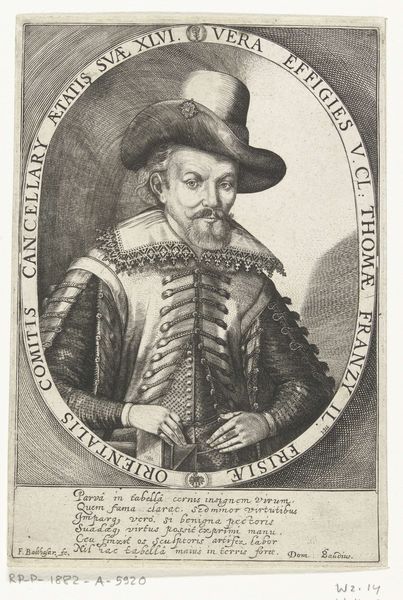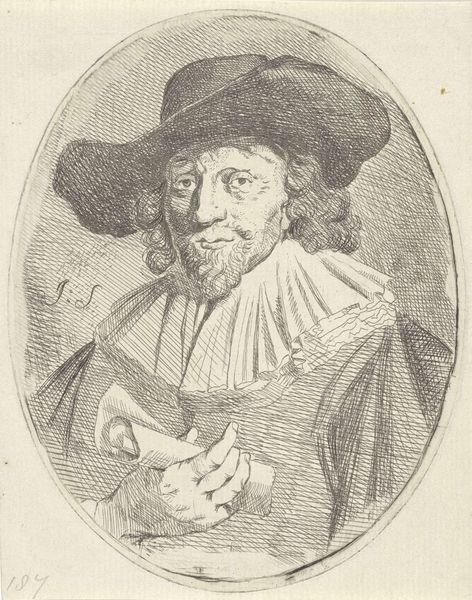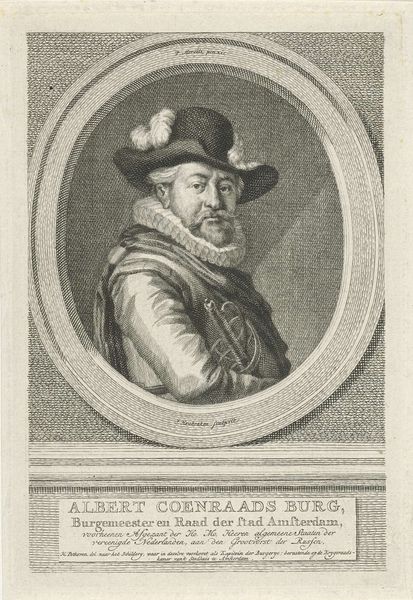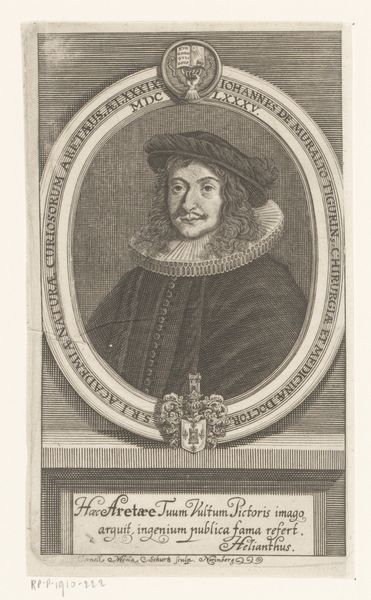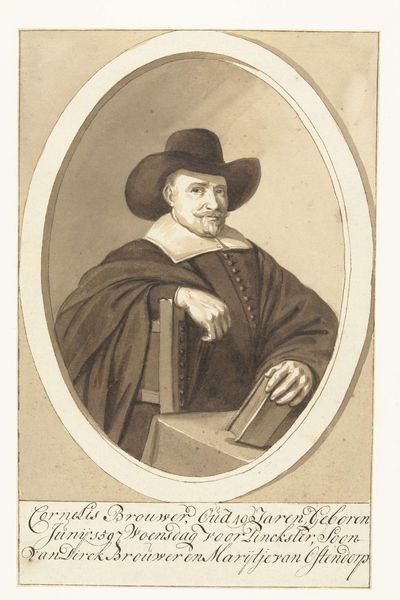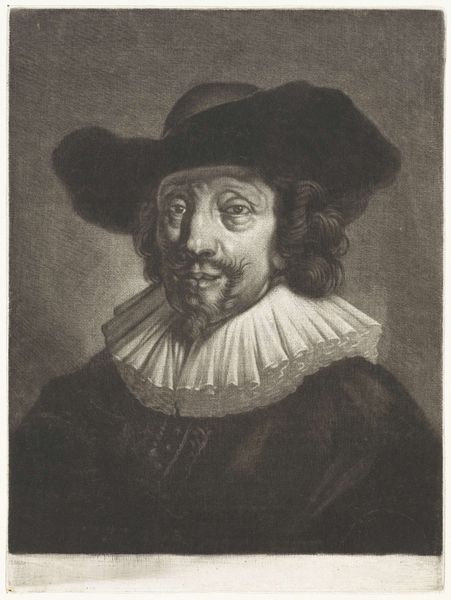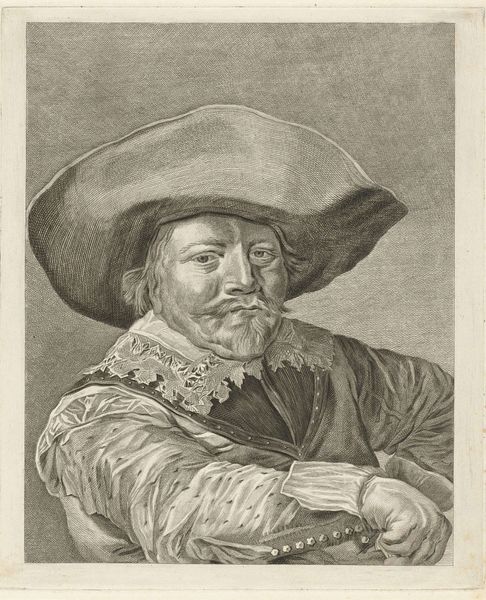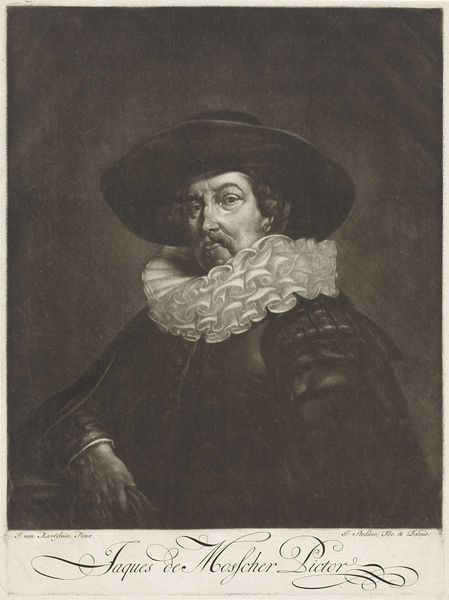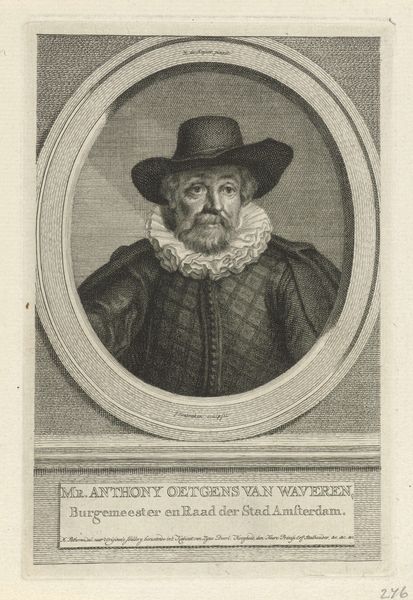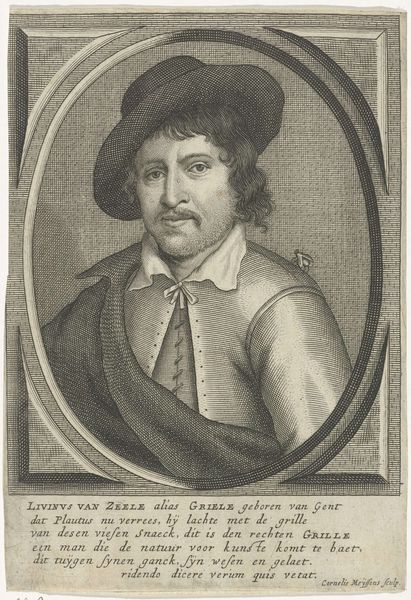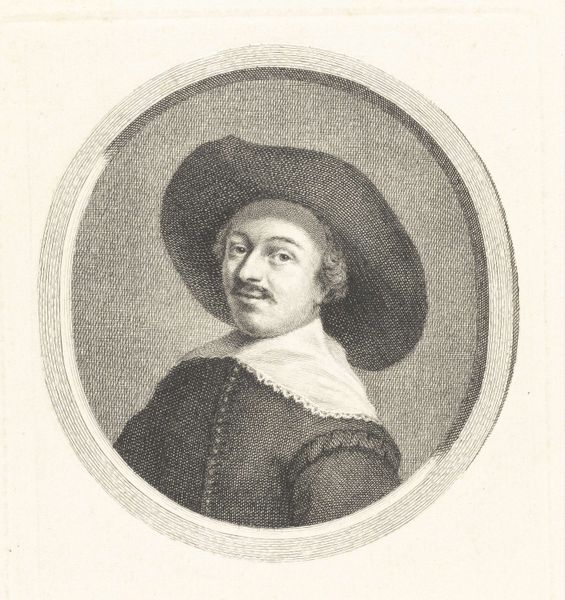
Dimensions: height 178 mm, width 119 mm
Copyright: Rijks Museum: Open Domain
Editor: Here we have Jacob Houbraken’s engraving, "Portret van Frans Banning Cocq," created before 1777. It’s fascinating how the artist was able to convey such detail with engravings. It’s quite formal and a bit austere, wouldn’t you say? What strikes you when you look at it? Curator: It is indeed in the Baroque portrait style. Primarily, I notice the artist's masterful use of line. Note the precise hatch marks creating tonal variations, and consequently defining the subject's form, lending a tactile quality. The oval frame within the rectangular format introduces an interesting dialogue of shapes. Do you observe how this interplay impacts your reading of the piece? Editor: I see what you mean about the framing now that you mention it, it almost looks like the oval is pressing inward. How do you feel the engraver’s choice to use a frame impacts the piece, outside of just the interesting shapes it makes? Curator: Precisely! By framing, Houbraken not only contains the subject but also elevates the figure into the realm of the idealised and perhaps symbolic, simultaneously declaring the inherent artifice involved. Consider the textural contrasts—the smooth face versus the intricate lace ruff—and how these create a dynamic visual field, leading our eye around the composition. What sense of depth do you perceive? Editor: I never thought about depth in engraving so directly! It’s there if you look for it in those fine lines. Curator: Exactly! We appreciate Houbraken's skill and, moreover, the calculated application of artistic techniques employed to articulate meaning. A thorough examination proves a treasure for both mind and eye. Editor: It definitely gives me a lot to think about in terms of just seeing beyond the surface when I’m analyzing art!
Comments
No comments
Be the first to comment and join the conversation on the ultimate creative platform.
